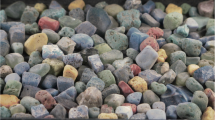Summary
Metallic compounds and other agents used in the manufacturing of glass are probably responsible for the cancer risks observed for glassworkers, especially glassblowers. Few hygienic observations have been reported from the art glass industry. Three glassworks were therefore studied with regard to air concentrations of lead, arsenic, nickel and manganese. The hygienic conditions of the blow-pipes were investigated at these glassworks and another two with regard to inside deposits of slag containing lead, arsenic, manganese and nickel as possible transporters that cause oral exposure. Atomic absorption spectrophotometry was used for the analyses. Apart from lead, the metal concentrations in the air were around the detection limit. Glassworks producing heavy crystal glass usually had higher concentrations of lead in the air than the semi-crystal glassworks. Seven out of 12 samples from heavy crystal glassworks exceeded the Swedish threshold limit of 50 μg/m3, while only four out of 28 samples from the semi-crystal glassworks exceeded this limit. Regarding metals in the slag from inside the blow-pipes, the concentrations (geometrical means) of lead and nickel were higher in the heavy crystal glassworks (6.9 μg lead/mg slag, and 5.0 μg nickel/mg slag versus 0.7 μg lead/mg slag and 0.6 μg nickel/mg slag in semi-crystal glassworks, respectively). The concentration of arsenic was similarly low in the pipes from all the glassworks (∼ 0.30 μg/mg slag) and the concentration of manganese was only slightly higher in heavy crystal glassworks (5.4 μg/mg slag versus 3.6 μg/mg slag in semi-crystal glassworks).
Similar content being viewed by others
References
Cordioli G, Cuoghi L, Solari P, Berrino F, Crosignani P, Riboli E (1987) Mortalita per tumora in una coorte di lavoratori della industria del vetro. Epidemiol Prevenzione 30:16–18
Hygieniska gränsvärden. Arbetarskyddsstyrelsens författningssamling 1987:12, Stockholm, Arbetarskyddsstyrelsen
Ide CW, Bullough GR (1988) Arsenic and old glass. J Soc Occup Med 38:85–88
Lillienberg L (1988) Mätning av kväveoxider vid glasbruken Sandvik och Kosta. Gothenburg: Department of Occupational Medicine, The Sahlgren Hospital
Ludersdorf R, Fuchs A, Mayer P, Skulsuksai G, Schäcke G (1987) Biological assessment of exposure to antimony and lead in the glass-producing industry. Int Arch Occup Environ Health 59:469–474
Raithel von HJ, Mayer P, Schaller von KH, Mohrmann W, Weltle D, Valentin H (1981) Untersuchungen zur Nickel-Exposition bei Beschäftigten in der Glas-Industrie. Zbl Arbeitsmed 31:332–339
Schaller von KH, Weltle D, Schiele R, Weissflog S, Mayer P, Valentin H (1981) Pilotstudie zur Quantifizierung der Bleieinwirkung in der keramischen und Glas-Industrie. Zbl Arbeitsmed 31:442–452
Schiödt M, Larsen V, Bassermann M (1980) Oral findings in glassblowers. Community Dent Oral Epidemiol 8:195–200
Schneider H-G, Gordziel F (1982) Untersuchungen über periodontal-schädigende Noxen bei Glasarbeitern. Z Ärztl Fortbild 76:416–418
Wingren G, Axelson O (1985) Mortality pattern in a glass producing area in the SE of Sweden. Br J Ind Med 42:411–414
Wingren G, Axelson O (1987) Mortality in the Swedish glassworks industry. Scand J Work Environ Health 13:412–416
Author information
Authors and Affiliations
Rights and permissions
About this article
Cite this article
Andersson, L., Wingren, G. & Axelson, O. Some hygienic observations from the glass industry. Int. Arch Occup Environ Heath 62, 249–252 (1990). https://doi.org/10.1007/BF00379442
Received:
Accepted:
Issue Date:
DOI: https://doi.org/10.1007/BF00379442




